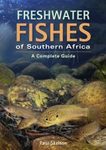Call us (08:30-16:00 UK)
+44 (0) 1803 86 59 13International
+44 (0) 1803 86 59 13Brauchen Sie Hilfe?
HilfeWichtiger Hinweis für Kundinnen und Kunden aus den USA
Datenerfassung und Monitoring
- Aquatic Survey & Monitoring
- Professional Hand & Kick Nets
- Water Testing
- Waders & Aquatic Safety
- View All
- Amphibian & Reptile Survey
- Amphibian Survey & Monitoring
- Reptile Survey & Monitoring
- Scales, Balances & Holding Bags
- View All
Feldführer und Naturgeschichte
Akademische und professionelle Bücher
- Evolutionary Biology
- Evolution
- Human Evolution & Anthropology
- Cladistics, Phylogeny & Taxonomy
- View All
British Wildlife
British Wildlife is the leading natural history magazine in the UK, providing essential reading for both enthusiast and professional naturalists and wildlife conservationists. Published eight times a year, British Wildlife bridges the gap between popular writing and scientific literature through a combination of long-form articles, regular columns and reports, book reviews and letters.
Conservation Land Management
Conservation Land Management (CLM) ist ein Mitgliedermagazin und erscheint viermal im Jahr. Das Magazin gilt allgemein als unverzichtbare Lektüre für alle Personen, die sich aktiv für das Landmanagement in Großbritannien einsetzen. CLM enthält Artikel in Langform, Veranstaltungslisten, Buchempfehlungen, neue Produktinformationen und Berichte über Konferenzen und Vorträge.





![Shīrakansu no Nazo: Rikujō Seibutsu no Idenshi o Motsu Sakana [The Mystery of the Coelacanth: A Fish with Genes of Terrestrial Organisms] Shīrakansu no Nazo: Rikujō Seibutsu no Idenshi o Motsu Sakana [The Mystery of the Coelacanth: A Fish with Genes of Terrestrial Organisms]](http://mediacdn.nhbs.com/jackets/jackets_resizer_xlarge/23/235500.jpg?height=620)
![Shīrakansu no Nazo: Rikujō Seibutsu no Idenshi o Motsu Sakana [The Mystery of the Coelacanth: A Fish with Genes of Terrestrial Organisms]](http://mediacdn.nhbs.com/jackets/jackets_resizer/23/235500.jpg)
![Shīrakansu no Nazo: Rikujō Seibutsu no Idenshi o Motsu Sakana [The Mystery of the Coelacanth: A Fish with Genes of Terrestrial Organisms]](http://mediacdn.nhbs.com/jackets/jackets_resizer/23/235500_1.jpg)
![Shīrakansu no Nazo: Rikujō Seibutsu no Idenshi o Motsu Sakana [The Mystery of the Coelacanth: A Fish with Genes of Terrestrial Organisms]](http://mediacdn.nhbs.com/jackets/jackets_resizer/23/235500_2.jpg)
![Shīrakansu no Nazo: Rikujō Seibutsu no Idenshi o Motsu Sakana [The Mystery of the Coelacanth: A Fish with Genes of Terrestrial Organisms]](http://mediacdn.nhbs.com/jackets/jackets_resizer/23/235500_3.jpg)
![Shīrakansu no Nazo: Rikujō Seibutsu no Idenshi o Motsu Sakana [The Mystery of the Coelacanth: A Fish with Genes of Terrestrial Organisms]](http://mediacdn.nhbs.com/jackets/jackets_resizer/23/235500_4.jpg)
![Shīrakansu no Nazo: Rikujō Seibutsu no Idenshi o Motsu Sakana [The Mystery of the Coelacanth: A Fish with Genes of Terrestrial Organisms]](http://mediacdn.nhbs.com/jackets/jackets_resizer/23/235500_5.jpg)
















![An Identification Guide to the Ducks of Japan [Japanese]](http://mediacdn.nhbs.com/jackets/jackets_resizer_medium/23/234236.jpg?height=150&width=97)
![The Most Beautiful Photographs of Drifting Larvae [Japanese]](http://mediacdn.nhbs.com/jackets/jackets_resizer_medium/26/264278.jpg?height=150&width=122)
![An Identification Guide to the Gulls of Japan [Japanese]](http://mediacdn.nhbs.com/jackets/jackets_resizer_medium/24/249001.jpg?height=150&width=97)
![The Most Beautiful Photographs of Beetles [Japanese]](http://mediacdn.nhbs.com/jackets/jackets_resizer_medium/26/262290.jpg?height=150&width=122)
![Kabutogani no Nazo: 2 Oku-nen Mae Kara Katachi o Kaezu Iki Tsudzuketa Wake [The Mystery of the Horseshoe Crab: 200 Million Years of Existence without Changing Shape]](http://mediacdn.nhbs.com/jackets/jackets_resizer_medium/24/242122.jpg?height=150&width=99)
![Umiushi no Seitai Kansatsu Zukan [Ecology of Sea Slugs & Nudibranchs Illustrated]](http://mediacdn.nhbs.com/jackets/jackets_resizer_medium/26/267212.jpg?height=150&width=106)
![Sekai de Ichiban Utsukushī Kurage Zukan: Kaichū o Yūbi ni Fuyū Suru Shinpi-Tekina Seitai [The Most Beautiful Photographs of Jellyfish]](http://mediacdn.nhbs.com/jackets/jackets_resizer_medium/25/259385.jpg?height=150&width=122)
![Kiseichū Bijuaru Zukan: Kiken-do Shōjō de Shiru Hito ni Kisei Suru Seibutsu [Visual Parasite Book: Organisms Parasitizing Humans Including Risks and Symptoms]](http://mediacdn.nhbs.com/jackets/jackets_resizer_medium/24/242709.jpg?height=150&width=106)
![Kurage no Fushigi: Zenshin ga nō ni Naru? Nazo no Fuyū Seimei-Tai [The Mystery of the Jellyfish]](http://mediacdn.nhbs.com/jackets/jackets_resizer_medium/23/235198.jpg?height=150&width=103)
![Visual Encyclopedia of Orca [Japanese]](http://mediacdn.nhbs.com/jackets/jackets_resizer_medium/22/227208.jpg?height=150&width=106)
![Ophistobranchs Illustrated [Japanese]](http://mediacdn.nhbs.com/jackets/jackets_resizer_medium/22/224216.jpg?height=150&width=104)
![Flatworms Illustrated [Japanese]](http://mediacdn.nhbs.com/jackets/jackets_resizer_medium/22/224888.jpg?height=150&width=104)